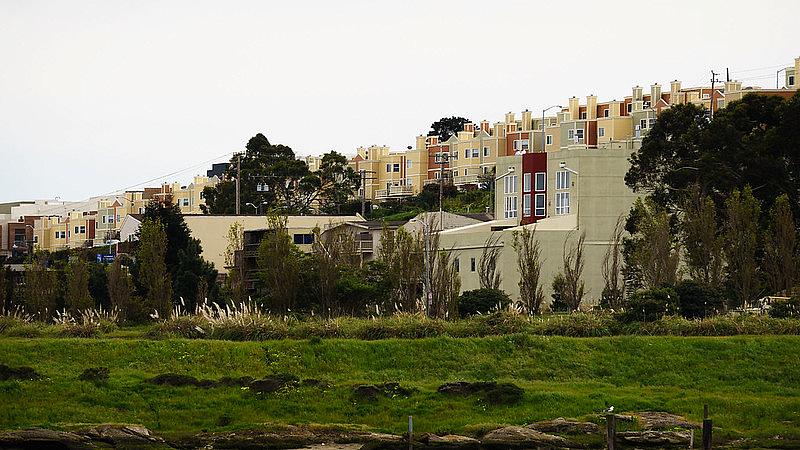Decades of racist urban planning have hurt SF neighborhood’s public health outcomes

(Photo by Dale Cruse via Flickr/Creative Commons)
San Francisco’s poorest neighborhoods have been the hardest hit by the COVID-19 crisis, chief among them Bayview-Hunters Point, which has one of the highest per capita rates of infection in the entire city and saw 240 new cases confirmed between Jan. 27 and Feb. 25, 2021.
But this did not happen by chance, nor is it the first time the neighborhood has been left to bear a disproportionate public health burden. Many of the neighborhood’s residents are families of color earning, by San Francisco standards, barely livable wages. Decades of neglect, appropriation and outright racism in urban planning and land use policies have codified Bayview-Hunters Point’s status as one of the city’s most hazardous.
Through a multipart series, my project for the 2021 California Fellowship will explore how decades of racist local policy have negatively impacted health outcomes in the neighborhood, home to San Francisco’s largest Black population. These policies have in turn led to a community suffering from disproportionately high rates of preventable emergency room visits; higher rates of premature mortality and infant mortality; and high rates of heart disease, stroke, lung cancer and diabetes.
Each story will focus on one element of urban planning and land use policy that has systematically disadvantaged this neighborhood and its residents and extracted its wealth for decades.
Initial areas of emphasis include environmental health; street design and road safety; transit systems and their impact on access to jobs, housing and health care; and basic investments such as playgrounds and grocery stores.
For decades, this neighborhood in south-central San Francisco has been a hub for diverse, working class families, starting with Chinese immigrants in the early 20th century followed by a surge of Black migrants after World War II.
Today it remains fiercely diverse and one of the only areas where working-class residents, known during this pandemic as essential workers, can afford to live comfortably. But the composition of the neighborhood has changed dramatically against a backdrop of racist housing policies, a rising cost of living and the tech boom-and-bust cycle.
In 1980, about 72% of the neighborhood identified as Black. Now, 27% of residents identify as Black while 31% identify as Asian-American/Pacific Islanders and 24% identify as Latino, according to a city report released last year.
While San Francisco’s Department of Public Health has proudly touted its focus on equity in combatting COVID-19, the data belies a darker truth: even before this pandemic, the city had failed to empower Bayview-Hunters Point with the tools, access and resources it needed to be a community that could fully realize its own health and vitality.
But why tell this story now?
Officials project San Francisco will bounce back after this pandemic, and when it does, the question of how to create space for growth within a city bounded by water on three sides will again arise.
Bayview-Hunters Point remains one of the last places in San Francisco for working class families, many of whom are families of color. It will be tempting for lawmakers, under the cover of alleged economic recovery, to continue to push these communities into an even deeper corner of the city in order to make room for development meant to serve transplants rather than the current residents of the Bayview-Hunters Point neighborhoods.
This project seeks to highlight the very real repercussions that another era of exploitative policy decisions, however wonky they might seem, can have on families, individuals and neighbors in our city.
